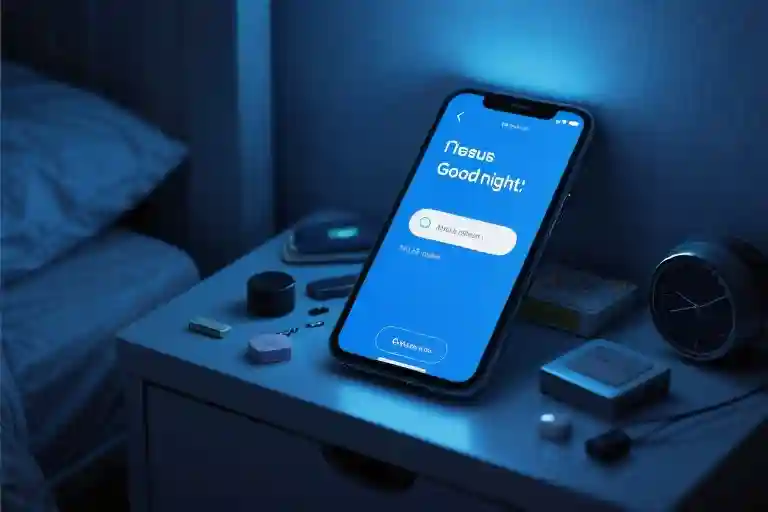The glow of a smartphone screen pierces the darkness at 3:17 AM, illuminating half-finished water bottles and crumpled receipts on the nightstand. There it sits – your last message to them, a simple ‘goodnight’ sent 72 hours ago, still waiting for a reply that may never come. This isn’t how love stories end in movies. There are no dramatic confrontations, no slammed doors, just the quiet erosion of something that once felt permanent.
Research from the Gottman Institute reveals that 68% of relationship breakdowns stem from gradual communication decay rather than explosive conflicts. It’s the slow suffocation of intimacy through unanswered texts, abbreviated responses, and conversations that never quite reach the depth they used to. The phenomenon has become so prevalent that psychologists now call it ‘silent breakup syndrome’ – the art of growing apart without ever officially saying goodbye.
What makes these digital-age goodbyes particularly painful is their ambiguity. Unlike traditional breakups with clear turning points, the silent version leaves you constantly questioning: ‘Is this just a rough patch or the beginning of the end?’ Your messages still get delivered, their name still appears in your favorites list, but the emotional bandwidth between you has narrowed to the width of a single bar on your signal indicator.
We’ve all experienced that moment of holding our breath when seeing ‘…’ appear in the chat bubble, only to receive a one-word response that lands like a stone in your stomach. The shift happens so gradually you might not notice until you’re suddenly strangers who know each other’s coffee orders and childhood traumas, yet can’t sustain a five-minute call without awkward pauses. Those once-effortless good morning texts now feel like contractual obligations, the kisses at the end reduced to perfunctory x’s where there used to be hearts.
This isn’t about assigning blame or diagnosing who ’caused’ the drift. Modern love simply moves at different speeds – some connections accelerate while others quietly coast to a stop. The tragedy isn’t in the ending itself, but in how long we spend pretending not to see the writing on the illuminated screen in our hands, how many times we mistake routine for romance simply because the motions continue.
Your last hundred messages might tell the story better than any therapist could. Not through their content, but in what’s missing between the lines – the disappearance of inside jokes, the lengthening response times, the way ‘I miss you’ now carries the weight of a question rather than a declaration. These are the vital signs of a relationship, and like any EKG readout, their patterns reveal truths we might not be ready to acknowledge.
Perhaps this is why silent breakups hurt differently. There’s no cathartic fight to release the tension, no definitive moment to mark the before and after. Just two people slowly becoming experts at avoiding the real conversation, until one day you realize you’ve been talking on a broken line for months, neither brave enough to hang up nor able to fix the connection.
Digital Autopsy Report
The slow death of a relationship often leaves its fingerprints in places we least expect—our text messages. What begins as vibrant exchanges filled with inside jokes and heart emojis gradually morphs into transactional updates, the emotional equivalent of signing a receipt. This digital decay follows predictable patterns, patterns worth examining if we’re to understand why some relationships fade without fanfare.
The Zombification of Greetings
Compare two screenshots side by side. September 2022: “Good morning sunshine ☀️ Can’t wait to squeeze you after work!!” with three kissing emojis. February 2024: “morning” sent at 10:37 AM, left on read until 3:15 PM with a solitary “k” in response. The temperature drop isn’t merely in word count—it’s in the evaporation of what linguists call “phatic communication,” those small verbal touches that maintain emotional connection rather than convey information.
Researchers at UCLA’s Digital Relationships Lab identified five stages of greeting degradation:
- Personalized terms of endearment (“Hey beautiful”)
- Generic but affectionate (“Good morning!”)
- Neutral efficiency (“morning”)
- Delayed response patterns
- Complete disappearance
Most couples linger at stage 3 for months, unaware they’re running on the fumes of past intimacy.
The Shrinking Conversation
Plot any long-term couple’s daily word count over six months and you’ll see the same ominous curve—a slow but steady decline that resembles a dying man’s EKG. Early days burst with paragraphs about childhood memories and philosophical debates about whether hot dogs are sandwiches. Later exchanges resemble diplomatic cables between hostile nations: “Did you pay the electric?” “No, your turn.”
What’s revealing isn’t just the quantity but the quality shift:
- Past: 47% future-oriented (“Let’s plan a trip to…”)
- Present: 82% logistical (“Don’t forget the dry cleaning”)
- Past: 22 questions per day (“What’s your favorite memory of us?”)
- Present: 3.2 questions, mostly rhetorical (“You took the keys, right?”)
Twitter users voted these the top three “love disappearance” moments:
- When their goodnight texts stopped including “xoxo” (32%)
- First time a message went unanswered for 24+ hours (28%)
- When shared Spotify playlists stopped updating (19%)
The Emoji Erosion
Emojis serve as the canaries in the digital coal mine. Early relationships overuse them like teenagers—multiple heart-eyes, custom Bitmojis, that phase where every noun gets its own corresponding icon. Then comes the Great Emoji Recession:
- Phase 1: Reduction in frequency (from 8 per message to 2)
- Phase 2: Simplification (replacing ❤️ with 👍)
- Phase 3: Functional use only (📅 for calendar dates)
- Phase 4: Complete emoji abstinence
A 2023 study in Cyberpsychology Journal found couples who maintained emoji diversity had 37% lower breakup rates. The researchers concluded: “Digital affection operates like vitamins—small daily doses matter more than occasional grand gestures.”
The Response Time Paradox
Tracking reply speeds reveals painful truths. In healthy relationships, response delays follow predictable patterns—slower during work hours, faster when apart. But as connection weakens, delays become erratic:
- Morning texts answered at midnight
- Quick replies to logistical queries, silence to emotional ones
- Increasing reliance on “snooze responding” (opening without replying)
Stanford sociologists coined the term “attention residue”—when physical presence doesn’t match mental absence. You might be sitting across the dinner table, but your delayed responses prove you’re emotionally elsewhere.
The Ghosts of Conversations Past
Scroll up through old messages and you’ll find the exact point where questions changed from “How does this make you feel?” to “What do you want for dinner?” Where paragraphs became sentences, then words, then thumbs-up reactions. The most haunting discovery? You probably didn’t notice the shift as it was happening.
This is the cruel genius of digital communication—it archives our emotional recession in real time, creating a fossil record of love’s gradual extinction. The messages remain, like flowers pressed between the pages of a forgotten book, their colors faded but their shapes still visible.
The Autopsy of Silence
We build fortresses when we’re afraid. Not with bricks and mortar, but with safe topics and carefully measured responses. In dying relationships, these psychological defense mechanisms emerge so gradually we mistake them for comfort.
The Three Archetypes of Emotional Retreat
- The Safe Island Syndrome
Where conversations once sailed across oceans of shared dreams, they now circle the same three square miles of weather reports and viral videos. You’ll recognize it by the unnatural absence of “What if…” questions and the overuse of “Did you see…” prompts. These are the relationship equivalent of small talk with a stranger in an elevator. - The Memory Blackout
The phrase “Remember when…” disappears from your shared vocabulary like a discontinued emoji. Past becomes a minefield rather than a playground. Couples develop an uncanny ability to discuss entire weekends without referencing anything that happened before last Thursday. - The Glassification of Emotion
Words become so carefully selected they might as well be typed under museum glass. That visceral reaction you used to share about the neighbor’s annoying dog? Now it’s filtered through three layers of “Maybe it’s just me but…” The more polished the language, the thicker the emotional padding.
Digital Doors Left Unopened
John Gottman’s famous “sliding door moments” – those critical junctures where turning toward or away from a partner shapes relationships – have mutated in our messaging apps. Where physical cues once guided us, we now navigate by:
- Typing indicators that disappear mid-sentence
- Message reactions substituting for actual responses
- The ominous “Seen” that hangs heavier than unspoken words
A 2023 Berkeley study found couples misinterpret digital sliding door moments 40% more often than in-person ones. That “Haha” reaction to your vulnerable text? It wasn’t malice – just someone scrolling while microwaving lunch.
The Year That Changed Your Voice
Play those two “Goodnight” voice notes side by side – the one from your anniversary trip and last Tuesday’s version. Notice how:
- The pacing has shifted from syrup to tap water
- The tonal range narrowed by at least three notes
- That specific way they used to say your name has been replaced by generic endearments
What you’re hearing is the acoustic fingerprint of emotional disengagement. Unlike dramatic fights that leave obvious scars, this erosion happens at frequencies most couples don’t think to monitor.
These defenses aren’t failures – they’re the psyche’s attempt to soften a landing we’re not ready to acknowledge. The tragedy isn’t that we build these shelters, but that we often mistake them for homes.
The Relationship ER Guide
When conversations start feeling like obligations rather than connections, it’s time for emergency intervention. Not the dramatic, grand gesture kind – those rarely work. What dying relationships need are precise, surgical strikes at the communication blockages. Here’s how to resuscitate your connection without overwhelming either of you.
The 7-Day Dialogue Challenge
Think of this as CPR training for your relationship. Each day focuses on rebuilding one critical component:
Day 1: The Temperature Check
Instead of ‘how was your day?’ try ‘what made you feel alive today?’ The question forces engagement beyond routine responses. Track response length and latency – not to judge, but to establish your baseline.
Day 2: Memory Lane Maintenance
Reference one specific shared memory (‘Remember when we got caught in that downpour?’). Nostalgia activates emotional bonding hormones like oxytocin. Note whether the reference gets picked up or dropped.
Day 3: The Vulnerability Dose
Share one genuine feeling using this formula: ‘I’ve been feeling [emotion] about [situation], and what I need is [request].’ Keep it brief – vulnerability isn’t about dumping, it’s about opening a door.
Day 4: Digital Detox Hour
Designate 60 minutes where phones stay in another room. The physical absence of devices changes conversation dynamics. Pay attention to how many uncomfortable silences occur – they’re not bad, just unused muscles flexing.
Day 5: The Appreciation Injection
Express one specific appreciation (‘I loved how you handled that work stress yesterday’). Specificity matters more than frequency here. Generic compliments don’t register.
Day 6: Future Mapping
Discuss one small future plan, even if it’s just ‘let’s try that new taco place Friday.’ Shared anticipation builds connection. Watch for enthusiasm levels in the planning.
Day 7: The Meta-Conversation
Discuss how these exercises felt using non-accusatory language (‘I noticed we…’ rather than ‘you always…’). This reflection cements the progress.
The Cold Response Dilemma
When met with one-word replies or delayed responses, most people either push harder or withdraw completely. Try these alternatives:
Scenario: They respond ‘k’ to something important
- ❌ ‘Why are you always so dismissive?’
- ❌ [Say nothing, simmer in resentment]
- ✅ ‘That response makes me feel like this isn’t important to you. Can you help me understand?’
Scenario: They take hours to reply
- ❌ ‘Are you ignoring me now?’
- ❌ [Double-texting anxiously]
- ✅ ‘I notice responses are slower lately. Should we set communication expectations that work for both of us?’
The pattern? Name the observable behavior, state its impact, then invite collaboration. This avoids accusation while addressing the issue.
From Small Talk to Soul Talk
Most dying relationships get stuck in transactional exchanges. This flowchart helps deepen conversations naturally:
They say: ‘Work was crazy today’
→ Level 1 (Surface): ‘That sucks’
→ Level 2 (Exploratory): ‘What made it overwhelming?’
→ Level 3 (Emotional): ‘How did that make you feel about your role there?’
→ Level 4 (Connective): ‘I remember you felt similarly when X happened. Is this different?’
Each level requires slightly more emotional risk. The key is matching their depth – if they stay at Level 2, don’t leap to Level 4. Think of it as conversational snorkeling before scuba diving.
The Progress Paradox
Improvement won’t feel linear. Some days will regress to clipped responses – that’s normal. What matters is the overall trajectory. Keep a log to spot patterns: maybe weekends get better responses, or mornings foster deeper talks. These insights become your relationship’s vital signs.
Remember, you’re not trying to return to some idealized past, but to discover who you are to each other now. That requires listening to what the silence between words is trying to say.
The Last Message
Your thumb hovers over the screen, tracing the contours of that last conversation. Three days ago. A simple “goodnight” without the heart emoji that used to punctuate every evening. You scroll up – the distance between messages stretching wider each week like continents drifting apart.
This is how relationships fade in the digital age. Not with dramatic confrontations, but with the quiet accumulation of unanswered questions in the spaces between texts. The morning greetings that lost their warmth somewhere around month seven. The inside jokes that stopped appearing after that awkward weekend with their parents. The gradual erosion of effort until you’re left analyzing punctuation like some heartbroken cryptographer.
We’ve all become archaeologists of our own dying relationships, sifting through digital layers:
- The Early Strata: Buried beneath months of chats, those enthusiastic double texts from the beginning still glow with promise
- The Middle Layers: Where conversations still flowed, but required slightly more effort to maintain
- The Surface Debris: The recent, brittle exchanges that feel more like obligations than connections
Here’s what your message history won’t show you: The exact moment things changed. There’s no notification for when love starts leaking out of a relationship. No push alert when “we need to talk” becomes “whatever you want.”
So we keep texting. Not because we have anything left to say, but because stopping would make it real. The messages become placeholders for the relationship we wish we still had – like leaving a light on for someone who isn’t coming home.
Try this: Open your most recent conversation. Not the curated highlights you show friends, but the raw, unedited daily exchanges. Notice:
- The response time differential (then vs now)
- The emoji extinction event
- The disappearance of pet names
- The shortening of voice notes
- The unanswered questions piling up
These aren’t just data points. They’re the vital signs of something much harder to measure. That tightness in your chest when you see “seen 2h ago” on a message that would have gotten an instant reply months ago isn’t paranoia – it’s pattern recognition.
Maybe it’s time to put down the phone. Not to punish them with silence, but to ask yourself the question scrolling through your mind: Are we still talking because we have something to say, or just because we haven’t figured out how to stop?
[Download the conversation analysis template] | [5SOS – Close as Strangers lyric excerpt] | [The message status changes to “typing…” then stops]






The best humor is in the awkward pause
A well-placed “So yeah…” can end a bit perfectly